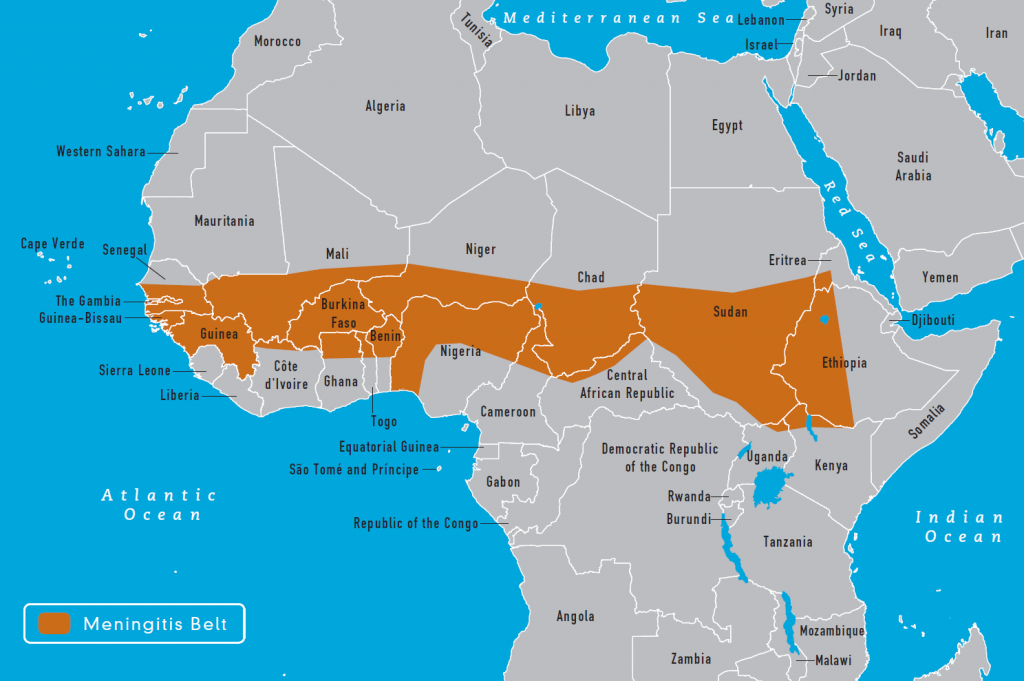The major cause of meningitis in Africa has changed in recent years, a study published in EBioMedicine and funded by Meningitis Research Foundation has confirmed. A type of bacterial meningitis called MenA (meningococcal group A) has seen huge declines but now meningococcal groups W, X and C have risen as major causes of meningitis in the African region known as the meningitis belt.

The meningitis belt countries of sub-Saharan Africa have been repeatedly devastated by meningitis epidemics since the early 1900’s.
Fortunately, since the introduction of the vaccine MenAfriVac® in 2010, over 300 million 1-29 year olds living in the meningitis belt countries have been vaccinated against MenA and there has been a dramatic decline in cases of MenA. However, meningitis caused by other types of meningococcal bacteria are rising and the disease remains a major public health threat.
In a new study, researchers from the three World Health Organization (WHO) Collaborating Centers for Reference and Research on Meningitis, in collaboration with the national laboratories in Burkina Faso, Niger, Chad, and Mali, as well as with the Agence de Médecine Préventive, have provided further evidence about the different meningococcal strains that are now causing disease in sub-Saharan Africa, revealing how these bacteria travel between countries.
Professor Dominique Caugant from the Norwegian Institute of Public Health who led the study said, “We used cutting edge sequencing technology to study the genetic makeup of over 700 samples of meningococcal bacteria collected from patients with meningitis in the meningitis belt from 2011 to 2016.
“We’ve identified that previously circulating strains of MenX, MenW as well as MenC strains have evolved to become major causes of meningococcal meningitis and are continuing to expand. The new strain of MenC that caused massive epidemics in Niger and Nigeria in 2015 and again in 2017 is continuing to evolve and expand into other countries.
“Interestingly, this research also revealed that for some meningococcal strains, there is a geographical split, with ‘families’ of bacteria causing disease in western Africa forming clusters distinct from those in central Africa. These bacteria are evolving locally and new, and potentially more virulent strains may emerge in a region of the world that has been hit the hardest by meningitis.”
Linda Glennie, Director of Research at Meningitis Research Foundation said, “This research is crucial because we need to understand how these strains evolve and spread to inform how future prevention strategies should best be targeted. It illustrates how whole genome sequencing methods have revolutionised meningitis surveillance, helping to monitor and predict epidemics, informing vaccine decision-making, and enabling valuable country comparisons to be made.
“The first vaccine expected to protect against five types of meningococcal disease – meningococcal A, C, W, Y and X is currently in development and, if affordable, this could be key to protecting against all major types of meningococcal meningitis prevalent in the meningitis belt.
“We have always stressed the importance of defeating meningitis and septicaemia around the world, as the disease passes from human to human without respect for national borders. This year we are delighted to be part of newly established World Health Organization task force to defeat meningitis by 2030.”


Good information educative and promising